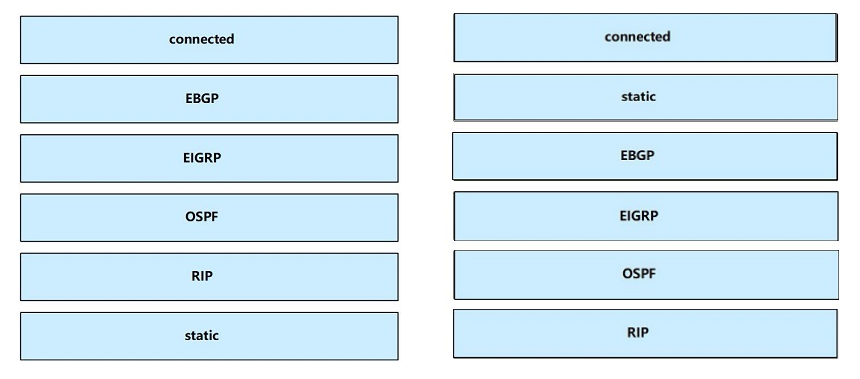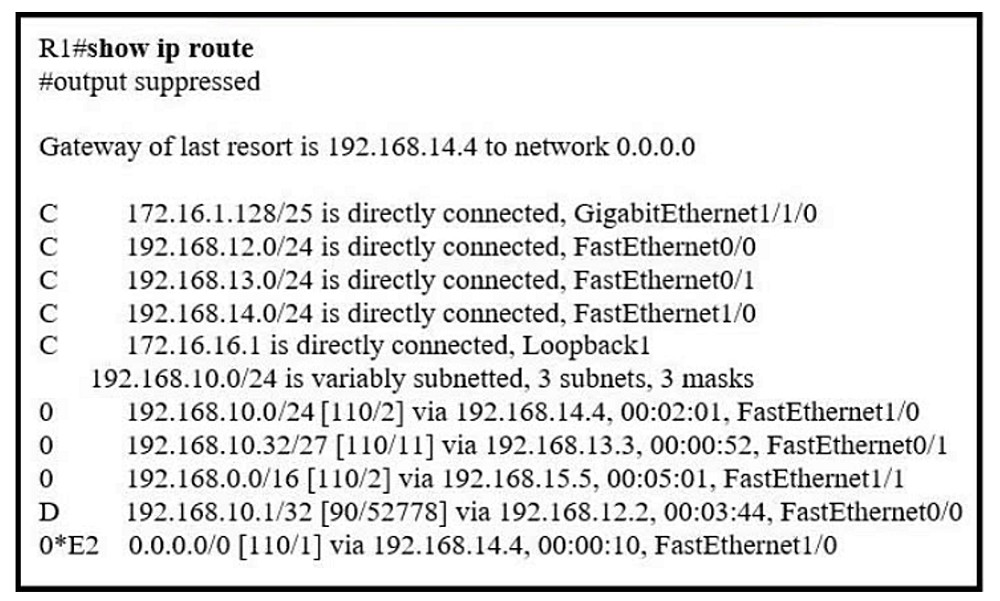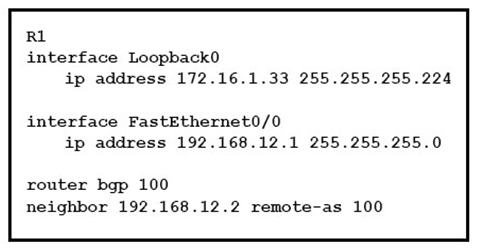Which two statements about exterior routing protocols are true? (Choose two.)
BC
You have two paths for the 10.10.10.0 network - one that has a feasible distance of 3072 and the other of 6144.
What do you need to do to load balance your EIGRP routes?
BC
Every routing protocol supports equal cost path load balancing. In addition, Interior Gateway Routing Protocol (IGRP) and EIGRP also support unequal cost path load balancing. Use the variance n command in order to instruct the router to include routes with a metric of less than n times the minimum metric route for that destination. The variable n can take a value between 1 and 128. The default is 1, which means equal cost load balancing. Traffic is also distributed among the links with unequal costs, proportionately, with respect to the metric.
Reference:
https://www.cisco.com/c/en/us/support/docs/ip/enhanced-interior-gateway-routing-protocol-eigrp/13677-19.html#topic1
DRAG DROP -
Drag each route source from the left to the numbers on the right. Beginning with the lowest and ending with the highest administrative distance.
Select and Place:

Which two circumstances can prevent two routers from establishing an OSPF neighbor adjacency? (Choose two.)
DE
Which three describe the reasons large OSPF networks use a hierarchical design? (Choose three.)
ABE
Refer to the exhibit. If R1 receives a packet destined to 172.16.1.1, to which IP address does it send the packet?
A
Refer to the exhibit. On R1 which routing protocol is in use on the route to 192.168.10.1?
D
Refer to the exhibit. Which Command do you enter so that R1 advertises the loopback0 interface to the BGP Peers?
A
Refer to exhibit. What Administrative distance has route to 192.168.10.1?
B
Which value is used to determine the active router in an HSRP default configuration?
B
Q. If there is no priority configured for a standby group, what determines which router is active?
A. The priority field is used to elect the active router and the standby router for the specific group. In the case of an equal priority, the router with the highest IP address for the respective group is elected as active. Furthermore, if there are more than two routers in the group, the second highest IP address determines the standby router and the other router/routers are in the listen state.